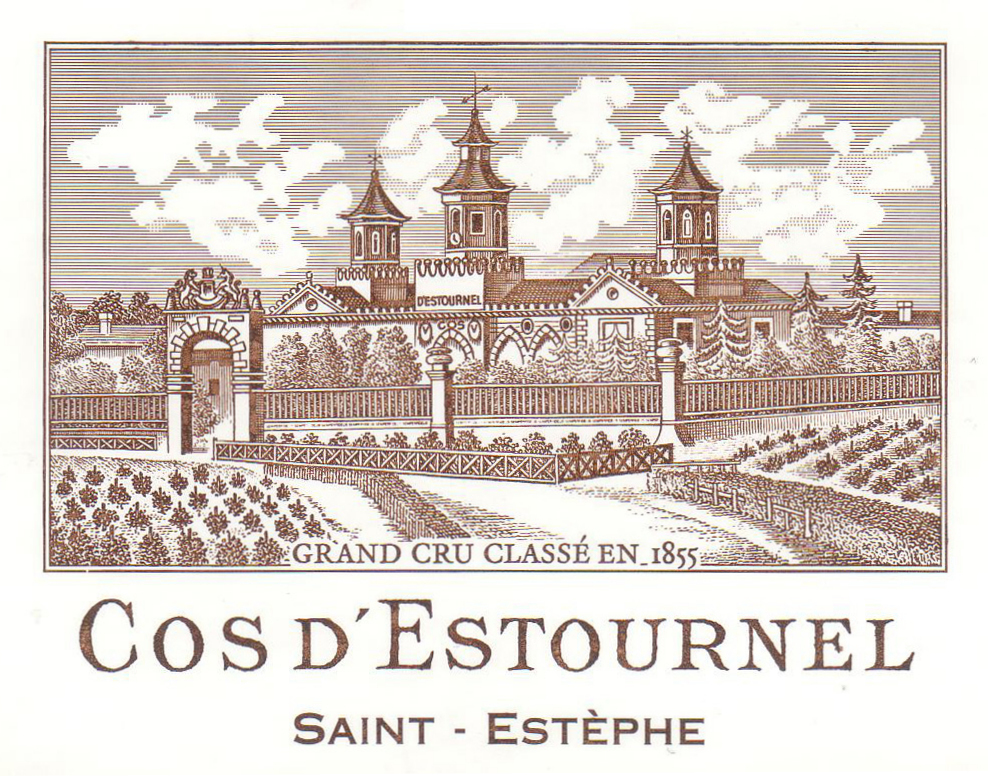Château Cos D'Estournel 2011
Review of the Estate
Château Cos d'Estournel is a winery in the Saint-Estèphe appellation of the Bordeaux region of France. It is also the name of the red wine produced by this property. The wine produced here was classified as one of fifteen Deuxièmes Crus (Second Growths) in the original Bordeaux Wine Official Classification of 1855.
Château Cos d'Estournel produces the eponymous grand vin, the second wine since the 1994 vintage, Les Pagodes de Cos from the estate's younger vines, as well as Château Marbuzet from fruit of nearby plots. The property is adjacent to Château Lafite-Rothschild in the neighbouring commune of Pauillac.
In 1811, Louis Gaspard d'Estournel decided to make wine from a few hectares of vines that he had inherited and Château Cos d'Estournel was born. Classified as a Deuxième Cru Classè in 1855, exports of this prestigious wine eventually reached as far as Southeast Asia, which inspired long-time Sinophile Louis to erect the unique and recognisable stone pagodas which still stand over the estate's cellars. Unfortunately, due to surmounting debts, Louis Gaspard eventually had to sell Chateau Cos Destournel, but his name has endured to this day.
During subsequent decades the estate underwent several ownership changes. However, the most significant improvements to the property were made during the tenure of Bruno Prats, who headed the estate from the late 1980's through to 1998. Along with his son (and current estate manager) Jean-Guillaume, Bruno modernised and improved both the facilities and winemaking practices.
In the old Gascon language of the region, Cos means 'hill of pebbles' and this accurately describes the soil composition of the estate's vineyards - deep gravel over a limestone bed.
The vineyards at Chateua Cos D'Estournel are worked manually and the harvest is always done by hand. Only vines that are more than 20 years old are used for the Grand Vin, while vines which are younger are used for the estate's second wine - Les Pagodes de Cos.
The château cellars were refurbished in 2009 and are now some of the most modern in Bordeaux - a feat of beautiful glass and steel engineering. Fermentation takes place in stainless steel, temperature controlled tanks and both pump-overs and racking are done by gravity. Malolactic fermentation takes place in barrel, of which 60 to 100% are new French oak. Chateau Cos D'Estorunel Grand Vin is aged for 18 months in barrel before bottling, while Les Pagodes de Cos is aged for 12 months.

Vineyard
Surface area: 158 acres
Grape Varieties: 60% Cabernet Sauvignon, 38% Merlot and 2% Cabernet Franc
Average age of vines: 35 years
Density of plantation: 8,000 - 10,000 vines per hectare
Average yields: 50 hectoliters per hectare
Average cases produced: 20,000 per year
Plateau of maturity: 10-30 years
Château Cos d'Estournel 2011 Reviews / Tasting Notes
Lisa Perrotti-Brown - The Wine Advocate
Point Score: 94
Composed of 65% Cabernet Sauvignon, 30% Merlot and 5% Cabernet Franc, the deep garnet-purple colored 2011 Cos d'Estournel gives up compelling notes of roasted nuts, black cherry compote, blueberry pie and red and black currants with touches of yeast extract and smoked meats. Medium to full-bodied, very firm, grainy textured and with a great core of youthful black fruits, the palate reveals loads of savory layers on the very long finish. This is very youthful and slowly maturing-a very impressive showing for this vintage!
Decanter
Point Score: 92
Overall 2011 was an early and dry vintage, but Cos d'Estournel harvested on 5 September because they were affected by localised hail. Perhaps this explains why this doesn't quite reach the heights that I have found elsewhere, just lacking some balance compared to other 2011 wines that I have tasted recently. The spice and black fruit notes are clear and highly attractive, and it's powerful and has character, but it needs a flick of freshness to emphasise the purity of fruit and lift the finish. Nevertheless, this does have a sense of energy and a gourmet touch through the mid-palate once it opens in the glass. 37% of production was used for the grand vin, due to the hail.
James Suckling
Point Score: 95
This is really excellent for the vintage with currants, dark berries and minerals on the nose and palate. Full body, firm tannins and a long finish. It's a bit linear but racy and superb. One of the best of the vintage. Better in 2020.